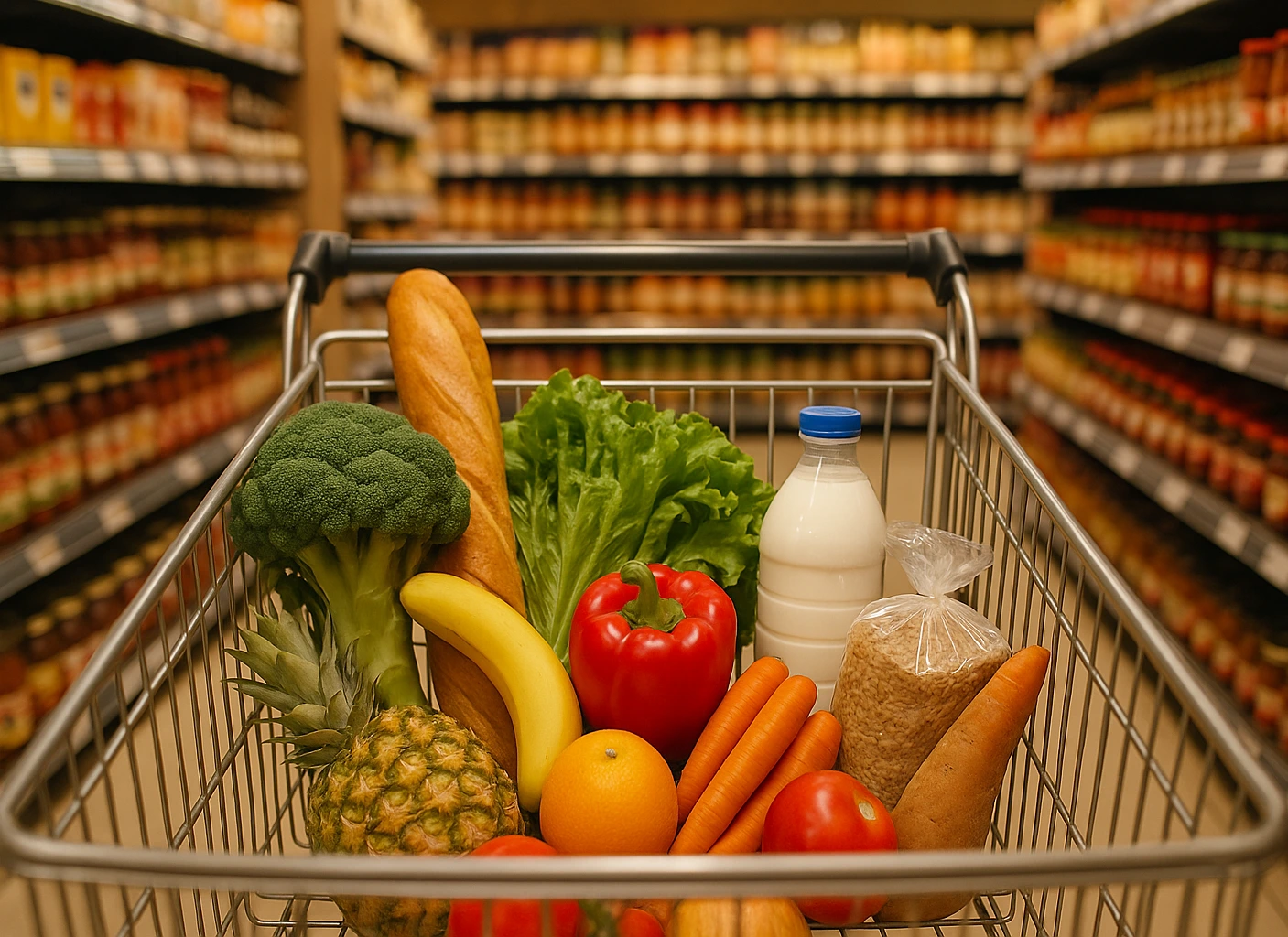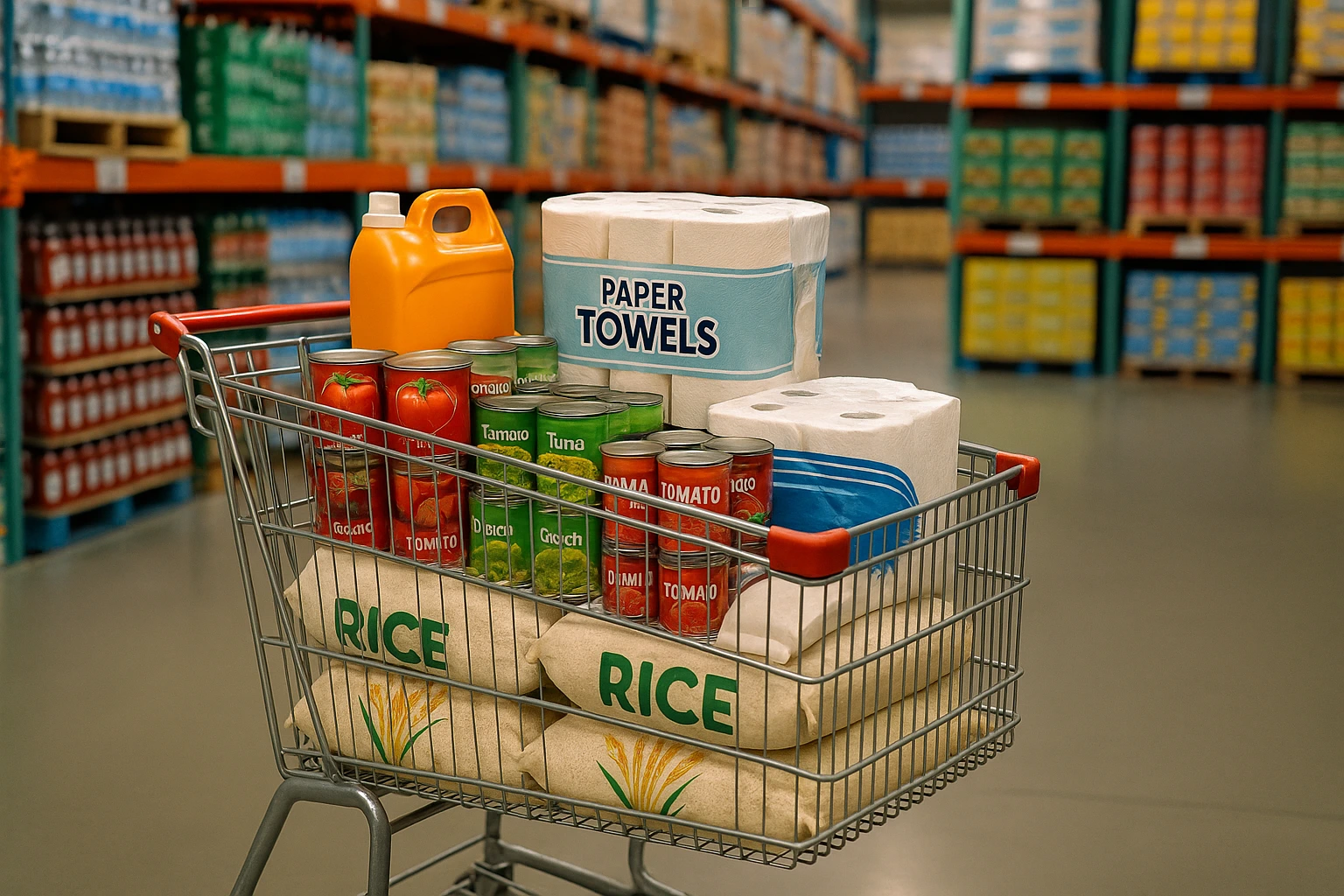
Does your grocery bill drain your wallet each month? You’re not alone—in 2023, the average U.S. household spent about $505/month on groceries (food at home) and about $328/month eating out—that’s roughly $832/month total. Last week, I cut my bill by $25 USD just by planning meals ahead. Just imagine redirecting those savings to a family vacation or paying off debt! With rising food prices, small changes like sticking to a list can save hundreds annually. What’s your biggest grocery shopping challenge? This guide shares practical strategies to grocery shop save money, reduce food waste, and maintain quality nutrition. Explore our budget grocery tips below and head over to our main guide on frugal living to make every dollar count.
Analyze Your Grocery Budget Now!Savings vary by store, region, and season. Product prices and availability change frequently. Use unit pricing and your local sales to confirm the best deal for you.
Table of Contents
- Key Takeaways to Save on Groceries
- Plan Ahead to Cut Grocery Costs
- Smart Strategies to Lower Your Grocery Bill
- Minimize Food Waste & Save More
- Advanced Grocery Budget Hacks
- Grocery Budget Analyzer Tool
- Conclusion: Lifelong Savings on Groceries
Key Takeaways to Save on Groceries
- Plan Ahead: Meal planning and a trusty shopping list are your secret weapons to reduce your grocery bill, keeping those impulse buys at bay.
- Shop Smart: Go for store brands, check unit prices, and jump on sales to stretch your grocery budget further.
- Reduce Waste: Store food right, get savvy with expiration dates, and turn leftovers into new meals to stretch your grocery dollars.
- Buy in Bulk Wisely: Purchase non-perishables in bulk when storage allows to save long-term.
Plan Ahead to Cut Grocery Costs
I get it—grocery shopping can feel like a slog when you’re watching every dollar. Planning ahead is what actually moves the needle. I used to roam the aisles and toss in whatever looked good, then went home to a bigger bill and unused ingredients. With a bit of planning, I’ve cut my spending by hundreds of dollars a year. New to meal planning? Apps like AnyList help you organize recipes and lists. Here’s how to start:
This post contains affiliate links. If you buy through our links, we may earn a commission at no extra cost to you. Learn more.
Meal Planning for Budget Success
Meal planning isn’t just for foodies; it’s a simple way to save money on groceries. Knowing what you’ll cook each week stops you from impulse buys or ordering takeout when you’re too tired to think. For example, last month, I planned a week of meals like chili with beans on sale for $0.99 USD and stir-fry with discounted peppers, saving me $30 USD. A friend of mine saved $50 USD by planning budget-friendly meals like lentil soup and baked potato nights. New to meal planning? Use apps like AnyList to organize recipes and lists. Here’s how you can start:
- Start Small: Plan 3–4 meals for the week, then add more as you get comfortable.
- Check Your Pantry: See what you already have so you don’t buy duplicates.
- Use Theme Nights: Try Taco Tuesday or Pasta Night to make planning easier.
- Plan Around Sales: Check store flyers and base meals on deals, like chicken at $1.99 USD/lb or seasonal veggies.
- Build in Leftovers: Cook extra portions to use for lunches or repurpose into new dishes, like turning roasted veggies into soup.
Try planning a week with chili, pasta with store-brand sauce ($1.50 USD/jar), and a veggie stir-fry. You’ll be surprised how much you save!
A grocery list keeps you focused—like a budget coach whispering, “Don’t buy that extra snack!”
Create a Shopping List That Saves
A shopping list keeps you focused and cuts impulse buys. Here’s how to make one that works well:
- Base It on Your Meal Plan: List only what you need for the meals you planned.
- Organize by Store Layout: Group items (e.g., produce, dairy) so you’re not backtracking and impulse-buying.
- Stick to It: Resist tempting displays, even if that new snack looks great.
Master Your Pantry Inventory
Knowing what’s in your pantry, fridge, and freezer helps you save on groceries by preventing waste and overbuying. Here’s how:
- Check Your Pantry: See what you already have so you don’t buy duplicates.
- Weekly Inventory: Look over your stock before you head to the store.
- First In, First Out (FIFO): Move older items forward so you use them first.
- Track Expiration Dates: Plan meals around items nearing their dates.

Budget Grocery Tips: Smart Strategies to Lower Your Grocery Bill
Use these tips to grocery shop save money and stretch your dollars. These simple strategies have helped me slash my weekly spending without giving up quality. For instance, apps like Flipp show me weekly deals in seconds. Cashback apps like Ibotta offer rebates on eligible items. For more ways to score deals on essentials, check out our guide on Where to Find Legit Freebies in 2025.
Choose Store Brands for Savings
Store brands are typically 20–25% cheaper than name brands, which makes them a go-to for keeping my food budget in check.
- Compare Ingredients: Store and name brands often have identical ingredients.
- Start with Staples: Try store-brand milk, eggs, or flour first.
- Experiment Gradually: Test store-brand snacks or canned goods to find favorites.
Budget Grocery Tips: Master Unit Pricing
Unit pricing helps you spot the best value between sizes and brands—it can save more than you might expect. Most stores show unit prices (e.g., price per ounce) on shelf tags. If not, calculate it by dividing the price by the quantity.
| Product | Size | Price (USD) | Unit Price (per oz) | Best Value? |
|---|---|---|---|---|
| Name-Brand Cereal | 12 oz | $4.50 | $0.38 | |
| Store-Brand Cereal | 18 oz | $5.00 | $0.28 | Yes |
Leverage Sales and Coupons
Try these tips:
- Check Flyers: Review weekly store flyers for deals.
- Use Digital Coupons: Load coupons onto loyalty cards via store apps.
- Stack Coupons: Combine manufacturer and store coupons where allowed.
- Coupon Apps: Use Ibotta or Fetch Rewards for cashback.
Buy in Bulk Strategically
Bulk buying can help you lower your grocery spending, but only if done wisely.
- Focus on Non-Perishables: Buy rice, beans, or pasta in bulk.
- Check Storage: Ensure you have space before buying.
- Compare Unit Prices: Verify bulk buys are cheaper.
- Avoid Waste: Only buy what you’ll use before it expires.

Minimize Food Waste & Save More
Reducing food waste helps you grocery shop save money and protect the environment. In fact, the USDA estimates Americans waste 30–40% of food annually. Composting scraps or using apps like Too Good To Go for discounted surplus food can further cut costs. Here’s how to lower your grocery bill by wasting less.
Understand Expiration Dates
Expiration dates can confuse shoppers, but understanding them helps you cut your grocery bill.
- Sell By: The store’s deadline to sell; safe to eat after.
- Use By: Optimal quality date; often safe beyond.
- Best By: Best flavor date; still safe to consume.
Store Food Properly
Proper storage extends food life, helping you waste less and save more.
- Refrigerate Promptly: Store perishables immediately.
- Use Airtight Containers: Prevent spoilage with sealed containers.
- Freeze for Longevity: Freeze extras like bread or meat.
- Organize Your Fridge: Keep frequently used items accessible.
Repurpose Leftovers Creatively
Leftovers are a budget-saver. For instance, turn leftover roasted chicken into tacos with this recipe: shred chicken, mix with salsa, and serve in tortillas with veggies. Blend wilting veggies into smoothies or mix rice into casseroles.
- Plan Leftovers: Cook extra for next-day meals.
- Repurpose Creatively: Transform leftovers into new dishes.
- Freeze Portions: Store leftovers in single servings.
Advanced Grocery Budget Hacks
Once you’ve mastered the basics, these advanced techniques can further help you maximize your grocery budget.
Batch Cooking for Efficiency
Batch cooking saves time and money. For example, make a large pot of chili and freeze portions for quick meals.
- Choose Freezable Recipes: Opt for soups or casseroles.
- Dedicate Time: Set aside a few hours weekly.
- Store in Portions: Freeze in single servings.
Grow Your Own Food
Growing food reduces your grocery bill. Even small efforts count. If you have kids, involve them in gardening for a fun, budget-friendly activity—check out our guide on Frugal Living with Kids: Budget-Friendly Tips for more ideas.
Eat Seasonally
Seasonal produce is cheaper and fresher, helping you save money on groceries.
- Visit Farmers Markets: Buy local for better prices.
- Buy in Bulk: Freeze seasonal fruits like berries.
Reduce Meat Consumption
Meat is pricey, so cutting back lowers your grocery costs.
- Meatless Mondays: Try vegetarian meals weekly.
- Use Meat Sparingly: Treat meat as a flavoring.
- Explore Plant-Based Proteins: Try beans, lentils, or tofu.
Grocery Budget Analyzer Tool
Frequently Asked Questions
Conclusion: Lifelong Savings on Groceries
You can save money at the store with a few smart habits. Lean into meal planning, shop wisely, and cut waste, and you’ll see the savings grow. For example, switching to store brands saved me $50 USD last month, and freezing leftovers meant no wasted food. These small tweaks add up—potentially saving you hundreds of dollars a year. By applying these budget-friendly grocery tips consistently, you’ll see lasting results. Start with one strategy, like making a shopping list, and build from there. You’ll feel in control and excited watching your savings grow. Get started today to save money on groceries and enjoy the rewards!